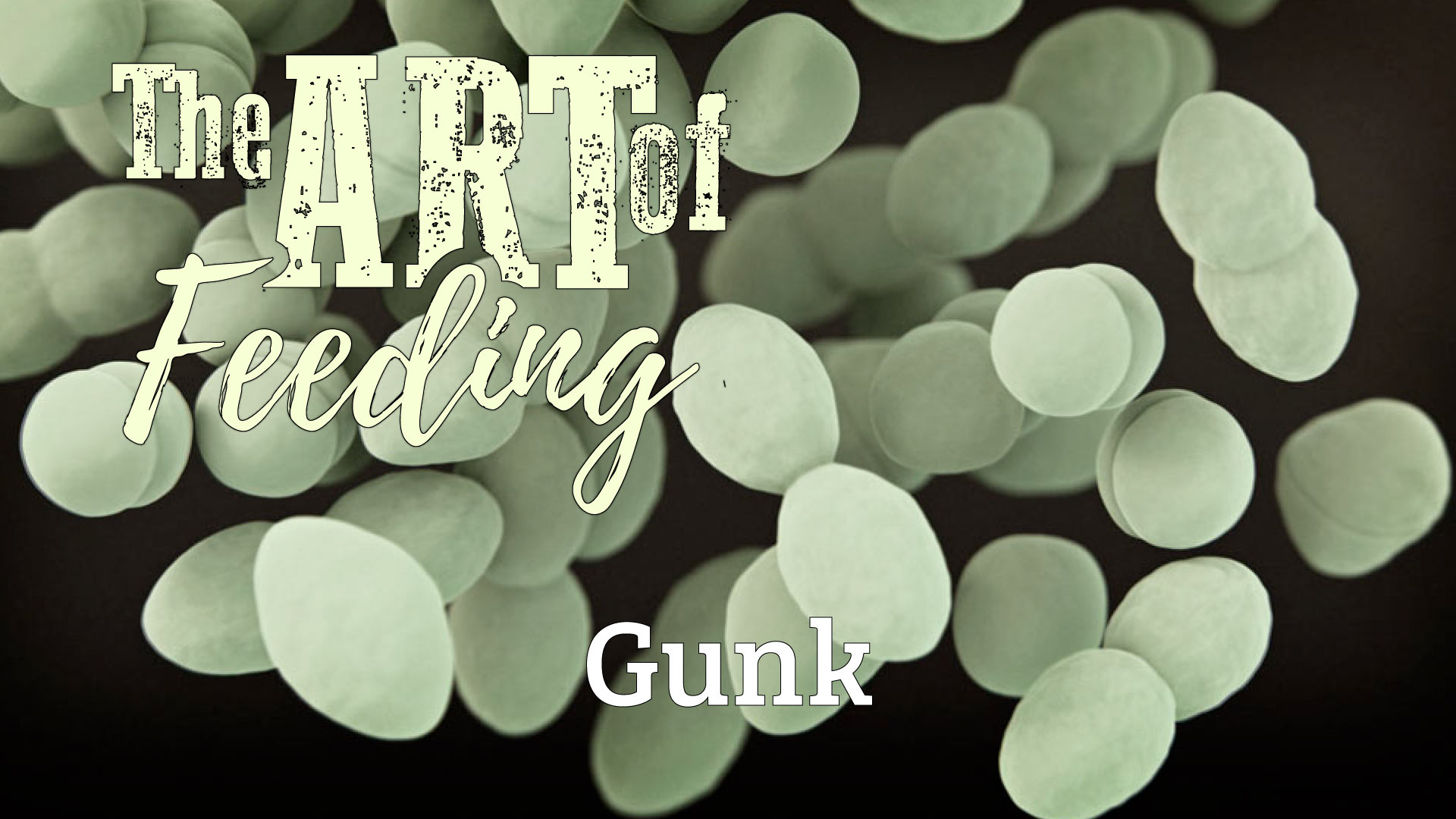Gunk by definition is an unpleasant sticky or messy substance. It is not only unpleasant to humans, but it also reduces dry matter intake, spreads molds and yeasts, and can cause disease in our cows. To discover it, you must be visually aware and be ready to do something about it.
Finding Gunk
Where do I find Gunk in diaries?
- Feed bunk floors. This is most common where the facility is not as new as the revenue pens such as sick pens and young stock pens.
- Improperly stored wet feed. When white and orange mold is on the sides of a pile you can pitch it… but when it is in the pile itself it is a major problem.
- Within the TMR mixer. In this location I call it the smear. It is usually the leaves from Alfalfa that are pressed on the floor or wall of the TMR mixer. This comes from trying to process dry Alfalfa with improperly maintained equipment. Like all machinery, TMR wagons wear out and knives and stops need to be replaced.
- The bottom of water troughs.
- The bottom of beds. This is especially true with beds close to the water troughs or misters.
- In between the claws of cattle on dirt.
- On equipment and trucks. As a Veterinarian I am aware of warts being spread with tattoo pliers.
- On clothes, boots, and hands. Take a close look at your maternity and bottle calf area.
Tools to Monitor Gunk
Besides visually observing Gunk, I like the following tools to monitor the growth of Gunk.
- Hygiena ATP tester. This measures the amount of bacteria present on the surface of things. I do routine audits of boots, clothes, hands, cell phones, maternity equipment, etc. I usually involve the person responsible for the area so they can see how disease is spread by contact.
- A Penn State forage box. I believe feeders and feed managers should shake out the different rations once a week. This is a good way for the feeders to get immediate feedback on the product they produce.
- Infrared. This technology has come down in price to the point where it is affordable to evaluate hot spots in a bunker face using a camera. It is another tool to help you see how well you are packing a bunker.
Finally, being aware of your surroundings and what you are doing is critical. A good work team will help each other improve. This is the only way of preventing the abnormal from becoming the normal.
This post is part 3 of a 4 part series on the Art of Feeding. To be notified immediately when the other articles are published, subscribe and choose immediate notifications.


